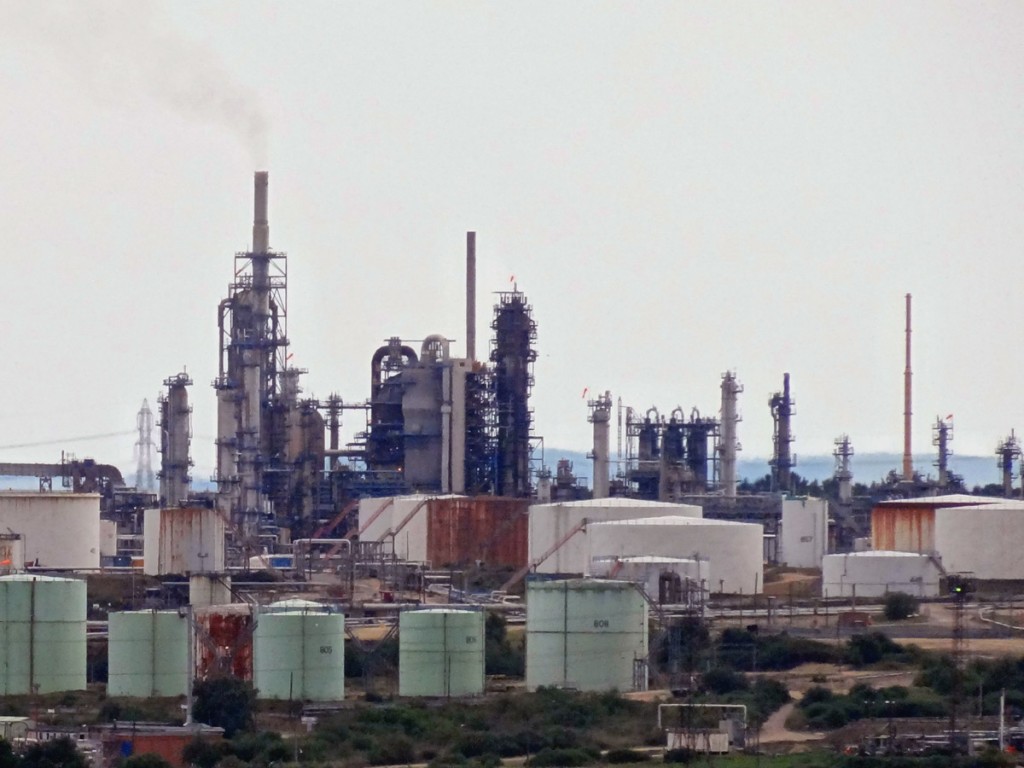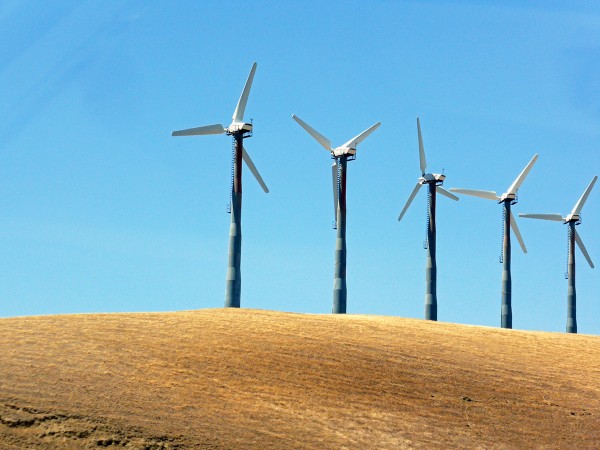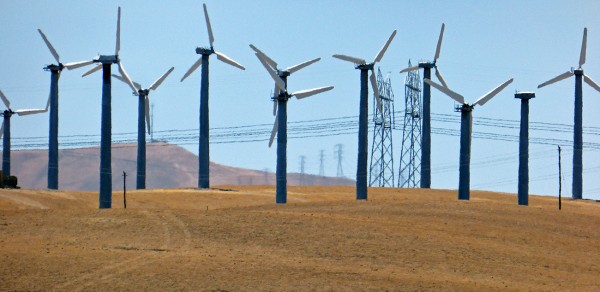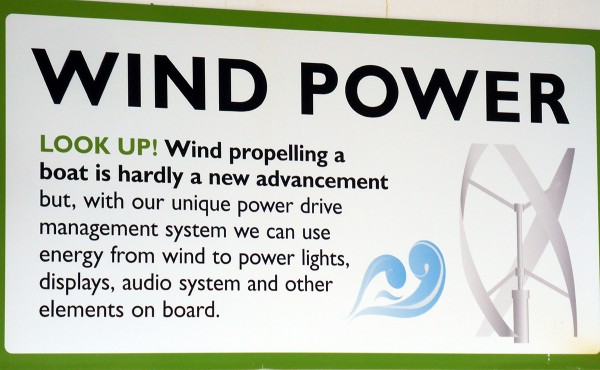 According to a recent IMF Survey Magazine article, Counting the Cost of Energy Subsidies, world-wide energy subsidies in 2015 account for $5.3 trillion or 6.5% of global GDP. The article summarises findings of an IMF working paper (see link below), which provides estimates by country, product (e.g. coal and oil) and component (e.g. global warming, local air pollution and congestion) in an Excel file
According to a recent IMF Survey Magazine article, Counting the Cost of Energy Subsidies, world-wide energy subsidies in 2015 account for $5.3 trillion or 6.5% of global GDP. The article summarises findings of an IMF working paper (see link below), which provides estimates by country, product (e.g. coal and oil) and component (e.g. global warming, local air pollution and congestion) in an Excel file
The working paper argues that energy subsidies are both larger and more pervasive than previously thought. According to the IMF Survey Magazine:
Eliminating global energy subsidies could reduce deaths related to fossil-fuel emissions by over 50 percent and fossil-fuel related carbon emissions by over 20 percent. The revenue gain from eliminating energy subsidies is projected to be $2.9 trillion (3.6 percent of global GDP) in 2015. This offers huge potential for reducing other taxes or strengthening revenue bases in countries where large informal sector constrains broader fiscal instruments.
In interpreting the findings it is important to understand how the term ‘subsidies’ is being used.  According to the report, most of the $5.3 trillion “arises from countries setting energy taxes below levels that fully reflect the environmental damage associated with energy consumption.”
According to the report, most of the $5.3 trillion “arises from countries setting energy taxes below levels that fully reflect the environmental damage associated with energy consumption.”
In other words, the term subsidy is being used whenever taxes do not fully account for the negative externalities associated with extracting and burning fossil fuels. Perhaps a better term would be ‘under-taxing’ rather than ‘subsidising’. Nevertheless the scale of not internalising externalities is huge. As Lord Nicholas Stern (author of the 2006 Stern Review on the Economics of Climate Change) says:
“The failure to reflect the real costs of fossil fuels in prices and policies means that the lives and livelihoods of billions of people around the world are being threatened by climate change and local air pollution.”
But, while not taxing external costs account for more than 80% of the underpricing of fossil fuel energy, some three-quarters of these external costs relate to local environmental damage, rather than international damage such as global warming. Thus charging for these external costs would benefit primarily the local population, as well as generating revenues, and thus provides a strong argument for governments raising energy prices through increased taxes or reduced subsidies.
So which countries are the major culprits in ‘subsidising’ fossil fuels? What specific measures does the IMF recommend to tackle the problem and what countries are addressing the problem and in what ways? The working paper and articles address these questions.
Articles
Counting the Cost of Energy Subsidies IMF Survey Magazine (17/7/15)
G20 countries pay over $1,000 per citizen in fossil fuel subsidies, says IMF The Guardian, Damian Carrington (4/8/15)
 Fossil fuels subsidised by $10m a minute, says IMF The Guardian, Damian Carrington (18/5/15)
Fossil fuels subsidised by $10m a minute, says IMF The Guardian, Damian Carrington (18/5/15)
Working Paper
How Large Are Global Energy Subsidies? IMF Working Paper, David Coady, Ian Parry, Louis Sears, and Baoping Shang (May 2015)
Questions
- Explain how energy subsidies are defined in the IMF working paper.
- What measurement problems are there in calculating the size of the ‘subsidies’?
- Draw a diagram to show how the under taxing of fossil fuel usage leads to a greater than socially optimum level of consumption of fossil fuels.
- What specific policies are pursued by the four biggest fossil fuel subsidising countries?
- What political problems are there in persuading countries to reduce fossil fuel subsidies/increase fossil fuel taxes.
- Is there a relatively high or low income elasticity of demand for energy? What are the implications of this for different income groups of policies to hold down energy prices?
 At the G7 conference in Bavaria on 7 and 8 June 2015, it was agreed to phase out the use of fossil fuels by the end of the century. But despite this significant objective, there were no short-term measures put in place to start on the process of achieving this goal. Nevertheless, the agreement contained commitments to further developments in carbon markets, elimination of fossil fuel subsidies, incentives for the development of green energy and support for developing countries in reducing hydrofluorocarbons.
At the G7 conference in Bavaria on 7 and 8 June 2015, it was agreed to phase out the use of fossil fuels by the end of the century. But despite this significant objective, there were no short-term measures put in place to start on the process of achieving this goal. Nevertheless, the agreement contained commitments to further developments in carbon markets, elimination of fossil fuel subsidies, incentives for the development of green energy and support for developing countries in reducing hydrofluorocarbons.
The agreement also sent a strong message to the 21st United Nations International Climate Change conference scheduled to meet in Paris from 30 November to 11 December 2015. The G7 communiqué states that binding rules would be required if the target was to be met.
The agreement should enhance transparency and accountability including through binding rules at its core to track progress towards achieving targets, which should promote increased ambition over time. This should enable all countries to follow a low-carbon and resilient development pathway in line with the global goal to hold the increase in global average temperature below 2°C.
But many environmentalists argue that a more fundamental approach is needed. This requires a change in the way the environment is perceived – by both individuals and politicians. The simple  selfish model of consumption to maximise consumer surplus and production to maximise profit should be rejected. Instead, the environment should be internalised into decision making.
selfish model of consumption to maximise consumer surplus and production to maximise profit should be rejected. Instead, the environment should be internalised into decision making.
What is more, there should be an integral ecology which brings together a wide range of disciplines, including economics, in analysing the functioning of societies and economies. Rather than being seen merely as a resource to be exploited, respect and care for the environment should be incorporated into our whole decision-making process, along with protecting societies and cultures, and rejecting economic systems that result in a growing divide between rich and poor.
In his latest encyclical, On care for our common home, Pope Francis considers integral ecology, not just in terms of a multidiciplinary approach to the environment but as an approach that integrates the objectives of social justice and care for the environment into an overarching approach to the functioning of societies and economies. And central to his message is the need to change the way human action is perceived at a personal level. Decision making should be focused on care for others and the environment not on the selfish pursuit of individual gain.
 With a change in heart towards other people and the environment, what would be seen as externalities in simple economic models based on rational self-interested behaviour become internal costs or benefits. Care and compassion become the drivers for action, rather than crude self interest.
With a change in heart towards other people and the environment, what would be seen as externalities in simple economic models based on rational self-interested behaviour become internal costs or benefits. Care and compassion become the drivers for action, rather than crude self interest.
A key question, of course, is how we get here to there; how society can achieve a mass change of heart. For religious leaders, such as the Pope, the approach centres on spiritual guidance. For the secular, the approach would probably centre on education and the encouragement for people to consider others in their decision making. But, of course, there is still a major role for economic instruments, such as taxes and subsidies, rules and regulations, and public investment.
Articles
G7 leaders agree to phase out fossil fuels by end of centuryEU Observer, Peter Teffer (8/6/15)
Integral Ecology Approach Links ‘Welfare of God’s People and God’s Creation’ Catholic Register (11/6/15)
President’s Corner Teilhard Perspective, John Grim (May 2015)
In his encyclical on climate change Pope Francis reveals himself to be a master of scientific detail Washington Post, Anthony Faiola, Michelle Boorstein and Chris Mooney (18/6/15)
Pope Francis Calls for Climate Action in Draft of Encyclical New York Times, Jim Yardley (15/6/15)
Pope Francis letter on climate change leaked: Draft Vatican encyclical released three days early Independent, Kashmira Gander and Michael Day (15/6/15)
The Pope is finally addressing the gaping hole in the Judaeo-Christian moral tradition Independent, Michael McCarthy (15/6/15)
Pope Francis warns of destruction of Earth’s ecosystem in leaked encyclical The Guardian, Stephanie Kirchgaessner and John Hooper (16/6/15)
Explosive intervention by Pope Francis set to transform climate change debate The Observer, John Vidal (13/6/15)
Pope Francis’ Leaked Encyclical Draft Attributes Climate Change To Human Activity Huffington Post, Antonia Blumberg (15/6/15)
Pope Francis’ Integral Ecology Huffington Post, Dave Pruett (28/5/15)
Videos
 Pope Francis: Climate change mostly man-made BBC News, Caroline Wyatt (18/6/15)
Pope Francis: Climate change mostly man-made BBC News, Caroline Wyatt (18/6/15)
 Pope urges action on global warming in leaked document BBC News, Chris Cook (16/6/15)
Pope urges action on global warming in leaked document BBC News, Chris Cook (16/6/15)
Questions
- What do you understand by ‘integral ecology’?
- Is an integrated approach to the environment and society consistent with ‘rational’ behaviour (a) in the narrow sense of ‘rational’ as used in consumer and producer theory; (b) in a broader sense of making actions consistent with goals?
- Can cost–benefit analysis be used in the context of an integrated and cross-disciplinary approach to the environment and society?
- What types of incentives would be useful in achieving the approach proposed by Pope Francis?
- Why do many companies publicly state that they pursue a policy of corporate responsibiliy?
- To what extent does it make sense to set targets for the end of this century?
- In what crucial ways might GDP need to be adjusted if it is to be used as a measure of the success of the approach to society, the economy and the environment as advocated by Pope Francis?
 Climate change is a global issue and reports indicate that more and more people are concerned about buying environmentally friendly products. We have seen tighter emissions targets and companies across the word investing in new technologies to reduce their emissions. But what can the Church of England do?
Climate change is a global issue and reports indicate that more and more people are concerned about buying environmentally friendly products. We have seen tighter emissions targets and companies across the word investing in new technologies to reduce their emissions. But what can the Church of England do?
The Church of England has numerous investments, which help generate its revenue. Some of these investments are in fossil fuel companies, which are extracting resources and polluting the environment. The Church’s new environmental policy will see it selling any of its investments in companies where more than 10% of its revenue is generated from extracting thermal coal or the production of oil from tar sands. Estimates suggest that this is a total of £12 million. The Deputy Chair of the Church’s Ethical Investment Advisory Group (EIAG) said:
“The Church has a moral responsibility to speak and act on both environmental stewardship and justice for the world’s poor who are most vulnerable to climate change … This responsibility encompasses not only the Church’s own work to reduce our own carbon footprint, but also how the Church’s money is invested and how we engage with companies on this vital issue.”
However, some have seen this as ‘trivial act’, suggesting it will have limited effect on the environment and have criticised some for suggesting that the biggest moral issue facing the world is climate change. But, with more companies recognising their ‘moral responsibility’, perhaps this decision by the Church of England is unsurprising. The following articles consider this topic.
Church of England divests from coal, tar sands as adopts new climate change policy Reuters (30/4/15)
Church of England wields its influence in fight against climate change The Guardian, Damian Carrington (1/5/15)
Church of England Bishop provokes anger by saying the biggest moral issue affecting the world is … CLIMATE CHANGE Mail Online, Steve Doughty (2/5/15)
Church of England to sell fossil fuel investments BBC News (1/5/15)
Church of England blacklists coal and tar sands investments Financial Times, Pilita Clark (30/4/15)
Church of England ends investments in heavily polluting fossil fuels The Guardian, Adam Vaughan (30/4/15)
Church of England pulls out of fossil fuels, but where does it invest its cash? Independent, Hazel Shefield (1/5/15)
Questions
- Why is climate change a global issue?
- How might the Church of England’s decision affect environmental policy in fossil fuel companies?
- What other action has the Church of England taken to tackle climate change?
- The Church and the articles suggest that the poor are the most vulnerable to climate change. Why is this?
- Do you think the Church of England will lose money by divesting itself of some of these investments?
- If the Church of England now has more money to invest, which factors might influence its decision as to where it should invest?
- Where does the Church of England get its money from? What does it spend it on?
 The Governor of California, Jerry Brown, has issued an executive order to cut greenhouse gas emissions 40% from 1990 levels by 2030 (a 44% cut on 2012 levels). This matches the target set by the EU. It is tougher than that of the US administration, which has set a target of reducing emissions in the range of 26 to 28 percent below 2005 levels by 2025.
The Governor of California, Jerry Brown, has issued an executive order to cut greenhouse gas emissions 40% from 1990 levels by 2030 (a 44% cut on 2012 levels). This matches the target set by the EU. It is tougher than that of the US administration, which has set a target of reducing emissions in the range of 26 to 28 percent below 2005 levels by 2025.
The former Governor of California, Arnold Schwarzenegger, had previously set a target of reducing emissions 80% below 1990 levels by 2050. Brown’s new target can be seen as an interim step toward meeting that longer-term goal.
There are several means by which it is planned to meet the Californian targets. These include:
a focus on zero- and near-zero technologies for moving freight, continued investment in renewables including solar roofs and distributed generation, greater use of low-carbon fuels including electricity and hydrogen, stronger efforts to reduce emissions of short-lived climate pollutants (methane, black carbon and fluorinated gases), and further efforts to create liveable, walkable communities and expansion of mass transit and other alternatives to travelling by car.
 Some of these will be achieved through legislation, after consultations with various stakeholders. But a crucial element in driving down emissions is the California’s carbon trading scheme. This is a cap-and-trade system, similar to the EU’s Emissions Trading Scheme.
Some of these will be achieved through legislation, after consultations with various stakeholders. But a crucial element in driving down emissions is the California’s carbon trading scheme. This is a cap-and-trade system, similar to the EU’s Emissions Trading Scheme.
The cap-and-trade rules came into effect on January 1, 2013 and apply to large electric power plants and large industrial plants. In 2015, they will extend to fuel distributors (including distributors of heating and transportation fuels). At that stage, the program will encompass around 360 businesses throughout California and nearly 85 percent of the state’s total greenhouse gas emissions.
Under a cap-and-trade system, companies must hold enough emission allowances to cover their emissions, and are free to buy and sell allowances on the open market. California held its first auction of greenhouse gas allowances on November 14, 2012. This marked the beginning of the first greenhouse gas cap-and-trade program in the United States since the group of nine Northeastern states in the Regional Greenhouse Gas Initiative (RGGI), a greenhouse gas cap-and-trade program for power plants, held its first auction in 2008.
Since January 2014, the Californian cap-and-trade scheme has been linked to that of Quebec in Canada and discussions are under way to link it with Ontario too. Also California is working with other west-coast states/provinces, Oregon, Washington and British Columbia, to develop a co-ordinated approach to greenhouse gas reductions
 To achieve sufficient reductions in emissions, it is not enough merely to have a cap-and-trade system which, through trading, encourages an efficient reduction in emissions. It is important to set the cap tight enough to achieve the targeted reductions and to ensure that the cap is enforced.
To achieve sufficient reductions in emissions, it is not enough merely to have a cap-and-trade system which, through trading, encourages an efficient reduction in emissions. It is important to set the cap tight enough to achieve the targeted reductions and to ensure that the cap is enforced.
In California, emissions allowances are distributed by a mix of free allocation and quarterly auctions. Free allocations account for around 90% of the allocations, but this percentage will decrease over time. The total allowances will decline (i.e. the cap will be tightened) by 3% per year from 2015 to 2020.
 At present the system applies to electric power plants, industrial plants and fuel distributors that emit, or are responsible for emissions of, 25,000 metric tons of carbon dioxide equivalent (CO2e) per year or more. The greenhouse gases covered are the six covered by the Kyoto Protocol ((CO2, CH4, N2O, HFCs, PFCs, SF6), plus NF3 and other fluoridated greenhouse gases.
At present the system applies to electric power plants, industrial plants and fuel distributors that emit, or are responsible for emissions of, 25,000 metric tons of carbon dioxide equivalent (CO2e) per year or more. The greenhouse gases covered are the six covered by the Kyoto Protocol ((CO2, CH4, N2O, HFCs, PFCs, SF6), plus NF3 and other fluoridated greenhouse gases.
Articles
California governor orders aggressive greenhouse gas cuts by 2030 Reuters. Rory Carroll (29/4/15)
California’s greenhouse gas emission targets are getting tougher Los Angeles Times, Chris Megerian and Michael Finnegan (29/4/15)
Jerry Brown sets aggressive California climate goal The Desert Sun, Sammy Roth (29/4/15)
California’s Brown Seeks Nation-Leading Greenhouse Gas Cuts Bloomberg, Michael B Marois (29/4/15)
California sets tough new targets to cut emissions BBC News, (29/4/15)
California’s New Greenhouse Gas Emissions Target Puts Obama’s To Shame New Republic, Rebecca Leber (29/4/15)
Governor Brown Announces New Statewide Climate Pollution Limit in 2030 Switchboard, Alex Jackson (29/4/15)
Cap-and-trade comes to Orego Watchdog, Chana Cox (29/4/15)
Cap and trade explained: What Ontario’s shift on emissions will mean The Globe and Mail, Adrian Morrow (13/4/15)
California’s Forests Have Become Climate Polluters Climate Central, John Upton (29/4/15)
States Can Learn from Each Other On Carbon Pricing The Energy Collective, Kyle Aarons (28/4/15)
Executive Order
Governor Brown Establishes Most Ambitious Greenhouse Gas Reduction Target in North America Office of Edmund G. Brown Jr. (29/4/15)
Frequently Asked Questions about Executive Order B-30-15: 2030 Carbon Target and Adaptation California Environmental Protection Agency: Air Resources Board (29/4/15)
Californian cap-and-trade scheme
Cap-and-Trade Program California Environmental Protection Agency: Air Resources Board (29/4/15)
California Cap and Trade Center for Climate and Energy Solutions (January 2014)
Questions
- Explain how a system of cap-and-trade, such as the Californian system and the ETS in the EU, works.
- Why does a cap-and-trade system lead to an efficient level of emissions reduction?
- How can a joint system, such as that between California and Quebec, work? Is it important to achieve the same percentage pollution reduction in both countries?
- What are countries coming to the United Nations Climate Change conference in Paris in November 2015 required to have communicated in advance?
- How might game theory be relevant to the negotiations in Paris? Are the pre-requirements on countries a good idea to tackle some of the ‘gaming’ problems that could occur?
- Why is a cap-and-trade system insufficient to tackle climate change? What other measures are required?
 Many UK coal mines closed in the 1970s and 80s. Coal extraction was too expensive in the UK to compete with cheap imported coal and many consumers were switching away from coal to cleaner fuels. Today many shale oil producers in the USA are finding that extraction has become unprofitable with oil prices having fallen by some 50% since mid-2014 (see A crude indicator of the economy (Part 2) and The price of oil in 2015 and beyond). So is it a bad idea to invest in fossil fuel production? Could such assets become unusable – what is known as ‘stranded assets‘?
Many UK coal mines closed in the 1970s and 80s. Coal extraction was too expensive in the UK to compete with cheap imported coal and many consumers were switching away from coal to cleaner fuels. Today many shale oil producers in the USA are finding that extraction has become unprofitable with oil prices having fallen by some 50% since mid-2014 (see A crude indicator of the economy (Part 2) and The price of oil in 2015 and beyond). So is it a bad idea to invest in fossil fuel production? Could such assets become unusable – what is known as ‘stranded assets‘?
In a speech on 3 March 2015, Confronting the challenges of tomorrow’s world, delivered at an insurance conference, Paul Fisher, Deputy Governor of the Bank of England, warned that a switch to both renewable sources of energy and actions to save energy could hit investors in fossil fuel companies.
‘One live risk right now is of insurers investing in assets that could be left ‘stranded’ by policy changes which limit the use of fossil fuels. As the world increasingly limits carbon emissions, and moves to alternative energy sources, investments in fossil fuels and related technologies – a growing financial market in recent decades – may take a huge hit. There are already a few specific examples of this having happened.
… As the world increasingly limits carbon emissions, and moves to alternative energy sources, investments in fossil fuels and related technologies – a growing financial market in recent decades – may take a huge hit. There are already a few specific examples of this having happened.’
Much of the known reserves of fossil fuels could not be used if climate change targets are to be met. And investment in the search for new reserves would be of little value unless they were very cheap to extract. But will climate change targets be met?  That is hard to predict and depends on international political agreements and implementation, combined with technological developments in fields such as clean-burn technologies, carbon capture and renewable energy. The scale of these developments is uncertain. As Paul Fisher said in his speech:
That is hard to predict and depends on international political agreements and implementation, combined with technological developments in fields such as clean-burn technologies, carbon capture and renewable energy. The scale of these developments is uncertain. As Paul Fisher said in his speech:
‘Tomorrow’s world inevitably brings change. Some changes can be forecast, or guessed by extrapolating from what we know today. But there are, inevitably, the unknown unknowns which will help shape the future. … As an ex-forecaster I can tell you confidently that the only thing we can be certain of is that there will be changes that no one will predict.’
The following articles look at the speech and at the financial risks of fossil fuel investment. The Guardian article also provides links to some useful resources.
Articles
Bank of England warns of huge financial risk from fossil fuel investments The Guardian, Damian Carrington (3/3/15)
PRA warns insurers on fossil fuel assets Insurance Asset Risk (3/3/15)
Energy trends changing investment dynamics UPI, Daniel J. Graeber (3/3/15)
Speech
Confronting the challenges of tomorrow’s world Bank of England, Paul Fisher (3/3/15)
Questions
- What factors are taken into account by investors in fossil fuel assets?
- Why might a power station become a ‘stranded asset’?
- How is game theory relevant in understanding the process of climate change negotiations and the outcomes of such negotiations?
- What social functions are filled by insurance?
- Why does climate change impact on insurers on both sides of their balance sheets?
- What is the Prudential Regulation Authority (PRA)? What is its purpose?
- Explain what is meant by ‘unknown unknowns’. How do they differ from ‘known unknowns’?
- How do the arguments in the article and the speech relate to the controversy about investing in fracking in the UK?
- Explain and comment on the statement by World Bank President, Jim Yong Kim, that sooner rather than later, financial regulators must address the systemic risk associated with carbon-intensive activities in their economies.
 According to a recent IMF Survey Magazine article, Counting the Cost of Energy Subsidies, world-wide energy subsidies in 2015 account for $5.3 trillion or 6.5% of global GDP. The article summarises findings of an IMF working paper (see link below), which provides estimates by country, product (e.g. coal and oil) and component (e.g. global warming, local air pollution and congestion) in an Excel file
According to a recent IMF Survey Magazine article, Counting the Cost of Energy Subsidies, world-wide energy subsidies in 2015 account for $5.3 trillion or 6.5% of global GDP. The article summarises findings of an IMF working paper (see link below), which provides estimates by country, product (e.g. coal and oil) and component (e.g. global warming, local air pollution and congestion) in an Excel file According to the report, most of the $5.3 trillion “arises from countries setting energy taxes below levels that fully reflect the environmental damage associated with energy consumption.”
According to the report, most of the $5.3 trillion “arises from countries setting energy taxes below levels that fully reflect the environmental damage associated with energy consumption.” Fossil fuels subsidised by $10m a minute, says IMF The Guardian, Damian Carrington (18/5/15)
Fossil fuels subsidised by $10m a minute, says IMF The Guardian, Damian Carrington (18/5/15)






